Heart Rate ~ Measuring Not Guessing!

As we draw to the end of our year we begin preparation for the new season by flicking through glossy mags and brochures of our favourite cycle manufacturer.
As we do, our heart quickens when we see that "must have" frame, set of wheels or blingtastic speed-enhancing, or ego-enhancing accessory.
But, be still my beating heart, I need to measure you.
Formal Measuring or Anecdotal Guesstimates?
Formal heart rate measuring is often ignored by most weekend
warriors as it's seen to be an ethereal, mystical, enigmatic, dark world
subject. But it needn't be. If you've formerly, or properly,
measured your heart rate, well done you. Trust me,
you're in the minority
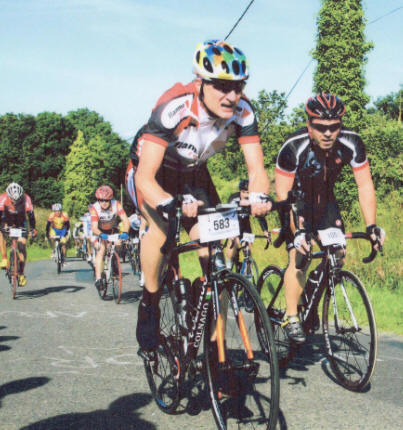
max heart rate isn't conducive to a "cool look"
There are an awful lot of heart rate monitors out there, worn by an awful lot of athletes. But it's an amazing fact that an awful lot of the people I ask, do not know their heart rate parameters, or how to accurately measure them.
Which in itself, is an awful shame, when you look at how much has been spent on these important gadgets.
Also, an awful lot of those that know, or think they know, their heart rates have never had a formal heart rate test! Most have guessed or estimated from race data, or have calculated their zones incorrectly from books, dodgy info, dodgy (lazy) coaches or the font of all knowledge, internet forum sites.
Even those that think they have their zones boxed off, and have done the right tests, may be out, due to one obvious (well it is when it's explained to you) fundamental flaw in their calculations.
If you use heart rate as a training tool and you are riding around 8-10 hours a week, then surely spending an hour now, before you embark on 500 hours of riding for next season, is a price worth paying?
Easy Calculation ~ No Sweat...
Many have used the old tried, or is that tired, but never trusted, 220
minus your age formula. Simple; get your max heart rate without
even having to breath hard. Job done,
Okay, let's nip this one in the bud straight away. I'm now nearly 53, and my max heart rate is consistently around 234 bpm. When racing a crit, I average 202 - 210 bpm for the entire event. An "average", get the miles in training ride, will easily bring a max of 180/190 on a steady climb.
My "220 calculation" says my max is 167. You can see how accurate and clearly useless that formula is for me. I would suggest it's as equally accurate for you. So now, once and for all, we can hopefully dispense to Dusty Bin the 220 minus age system, or for that matter, any calculated formula you may come across.
If more proof were needed, here's some empirical evidence...
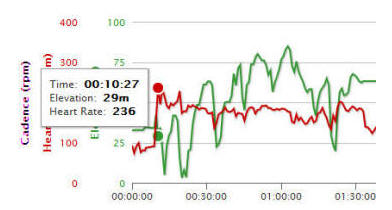
This was in the first ten minutes of the 2012 Tro Bro Leon Sportive when the hammer went down from the off. And of course, flamme rougers, were cracking on.
Chris Stephens was in the lead group, Andy Perree was driving the front of the chase group trying to get up to help Chris. I was hanging on at the back of the chase waiting for my heart to "settle" so I could go and help Andy... yeh right!
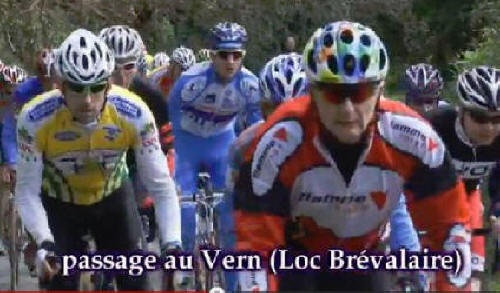
Tro Bro Leon Official Video ~ Chris and Andy long gone...
My average heart rate for the FOUR HOUR race, was 170 bpm! Three bpm higher than my "calculated max".
So, as you can see, ignore everything that says you can "accurately calculate" your max heart rate. You can't. It's like trying to calculate what you'll weigh at Christmas.
Max heart rate can not be calculated it can only be measured. So, here's how you measure it. But first...
Resting Heart Rate
Many athletes that come to me for a programme or test, are
confident that they think they know their max heart rate. They may not
always be right, but they believe they are and to them, that's what matters.
Very few actually know, or have even measured, their resting heart rate. I always get an answer of "it's around... x". It's normally guessed from what they believe a fit person's heart rate should be.
They've used the concept of the max heart rate formula and reversed it for their resting heart rate. I would suggest, it's as equally accurate. So here's how you get a definitive resting heart rate measurement.
First off, you have to take your heart rate before your head leaves the pillow from waking up in the morning. You also need to make sure you are rested from the previous evening's energetic activity. There's no use taking your heart rate the morning after an evening ten, a nocturne or any other nefarious, night-time activity!
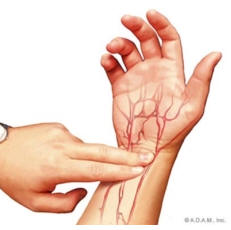 You
also don't want to be woken with a start by the equivalent of a "fire
alarm" alarm clock.
You
also don't want to be woken with a start by the equivalent of a "fire
alarm" alarm clock.
Wake gently. Without getting out of bed, grab your watch from the bed side table, then calm yourself.
When ready, count either your radial pulse in the wrist or your cartoid pulse in your neck, for a whole sixty seconds.
Do this on three separate daily occasions, over a period of a week, to get consistent results. You now have a cast-iron assured resting heart rate.
Keep it somewhere safe!
Okay, that's the easy bit over! Oh, and by the way, if you hand looks like the one above in the photo, go and see a doctor...
Of course, you can go to bed with a heart strap fitted and just check your display of choice when you wake. If you have a recording facility, it's quite interesting to see what your heart does through the night. The "sleeping" heart rate is of no use to us though, we need the minimum resting, awake heart rate.
The importance of this, will become clear, further down the page. As I've already told you my max heart rate, I might as well give you the obvious missing info. My resting is 48.
Orthostatic Heart Test
This is an excellent test and one I'd say at least 99% of
"normal" people (that's them) and 95% of athletes (that's you), have
never undertaken. It's so simple there's no reason you shouldn't
give it a go every once in a while.
Orthostatic Heart Rate is an excellent indicator of your freshness. Which as we know, is an important performance marker as your fitness if you are to peak for a key season's objective.
To be honest, this is best done with a heart belt on, as it gives more accurate results than a manual measurement. But both are acceptable as you long as you compare like with like.
After you've measured your resting heart rate (lying down
from waking up), make sure everyone else, pet's included, have left the
room. This next bit can look slightly ridiculous, and may have a
propensity to undermine your sporting credibility within the household!
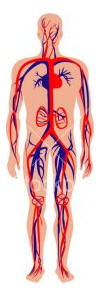
Swiftly, sharply and quickly, move from a lying position to a standing position. At this point, a few things will happen. One depends on your state of dress, which is why it may be best that you're alone. Don't want to get all self-conscious!
The other, and more important one, is that your blood is now being redistributed about your body and heading south, like the water in a flushed toilet, to your legs. If you're very fit, you may feel light headed as your systolic blood pressure drops.
Your heart rate now quickens as it desperately tries to raise blood pressure by pumping the blood from your legs, where it's not needed, up to the brain, where it most definitely is. This stops you falling over, although not always.
Shortly, you'll stop going dizzy, appear "back in the room" and within fifteen seconds or so, your heart rate will stabilize and settle at a "resting/standing" figure. If you can, make a note of the peak figure and the figure after fifteen seconds.
So you have your resting heart rate and your standing heart rate after fifteen seconds. Now you can workout your orthostatic heart rate (OHR)...
▼ Standing - Resting = Orthostatic bpmYou may want to do this over a period of a week or more to get a representative value of your "normal" orthostatic range. Again, I will explain why this figure is important further down the page.
Health & Safety Warning!
Okay now the heavy stuff. But before we start, the caveat.
Make sure you are fit and healthy, fresh and recovered from previous exertions and have the right mind-set to undertake the strenuous activity in to which you are about to launch yourself.
If you are in any doubt whatsoever, see your physician before doing a max heart rate test.
Max Heart Rate Test
If you can, find a mate; because we all know how competitive
it gets when mates are around. Then either get out on your bikes or get on
a turbo. You can do this on your own, but it is intense, it is
hard and it is stressful. So, if you have someone with whom you
can share the pain and/or will encourage you to push on, it'll make it a bit
easier.
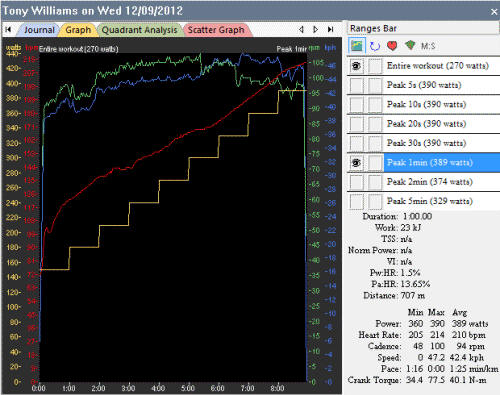
Before we start, the most accurate, consistent and safest way to measure your max heart rate, is to take a proper RAMP Test (above). If you don't want to, or can't, then here's a road based alternative.
Get a clear day, and go to a long, six to ten minute hill you know well. Don't want any surprise descents, junctions or traffic lights etc.
If you're in Jersey, it's Rozel, the long side, heading for Trinity. If you haven't got a hill, find the longest road you've got, and a head wind.
Your mate goes a little up the road to wait for you to catch up. If your heart rate monitor has one, start its recording, or lap function.
Get to the foot of the hill and start aggressively at a fast tempo pace, in the middle of the block. Don't sprint; this is a performance test, not a race or an ego trip.
As you get through the lower slopes, stay in the saddle, keeping your form, and push up the hill for a minute or so. After a minute, change up a gear and start pushing even harder.
At some point your legs will lactate and labour, and you will start gasping for breath. As this happens, change up another gear and get out of the saddle to push on. Raising yourself out the saddle will increase heart rate by a few more beats.
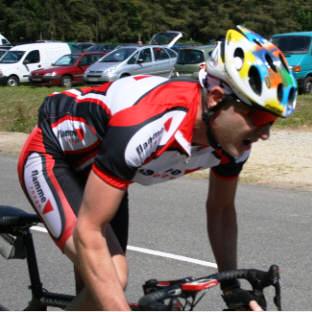 By now you should of caught your mate and they are riding
alongside you shouting encouragement and making sure you don't slack. I'm
sure there'll be no shortage of volunteers.
By now you should of caught your mate and they are riding
alongside you shouting encouragement and making sure you don't slack. I'm
sure there'll be no shortage of volunteers.
Just before your legs give way and you crash back down in to the saddle, attempt a full on sprint! It's your mate's job to race you!
When your vision returns, change down (little ring) and keep spinning for a further ten minutes.
Now you see why I recommend a turbo. Keep light pressure on the pedals and see how long it takes for your heart rate to come down and stabilize to a "sensible level".
If you don't have any hills; find a long road, with a head wind and replicate the hill by changing up a gear every 40 seconds or so.
You must hit your maximum heart rate before you get tired and have to abandon due to sore legs or run out of stamina. A max heart rate test should take no longer than six to eight minutes.
The advantage of a Ramp Test is that the near-death experience slowly creeps up on you and you get a heart rate curve plotted on a graph (as above). On a road or hill, it's in your face almost immediately and you don't get a "graded" heart profile.
The Ramp Test is a consistent, replicable, reliable profile. A hill can't be the same due to weather, speed, environment and even bike variables such as gears used. clothing worn or tyre pressures etc.
Working The Numbers ~ What Now?
Well my little panting chums, we now have a max heart rate
and a resting heart rate. And now I'll explain why some of the
calculations people use are, in my opinion, flawed.
Let's say your maximum heart rate was 180 bpm.
We all know that Active Recovery takes place when your heart rate is below 60% of your maximum. Which, using the "standard" formula is...
▼ 180 x 0.60 = 108 bpm
I can get 108 bpm pumping my tyres up! Most people I know can't ride that slow, so something is obviously out of whack.
Although none of our sessions specify heart rate as an effort intensity, the flamme rouge guidance heart zones use the Karvonen system.
You can't use anything below your minimum resting heart rate; let's assume that's 50 bpm. So in effect that number is baseline zero. You need to remove your resting heart rate, make your percentage calculations, then add it back on at the end.
So, our Active recovery formula now looks like this...
▼ ((Maximum - Resting) x 60%) + RestingSo our actual Active Recovery heart rate should be below...
▼ (180 - 50) x 0.6) + 50 = 128 bpm
▼ 180 minus 50 equals 130
▼ 60% of 130 equals 78.
▼ 78 + 50 equals 128.
Obviously this is 20 beats above the "standard" formula but is more realistic for non-professional athletes. And creeping in to Zone 1 for active recovery is hardly going to stop you recovering, send you in to over-training or wreck your season!
As we move up the heart zone chart, the variance closes and starts to fall in line where it really matters.
Here's how a 50 bpm resting, 180 bpm max heart rate looks in comparison; "our" numbers, in the industry standard zones, are in the main chart, with "their" "incorrect" %max system figures and the beat variance for the two systems shown to the right.
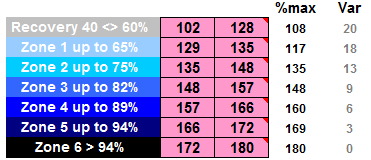
So you can see, that as we move through the "middle zones" we still fall within the zone parameters. And as we get to the intense zones, the variance narrows. So is it really that bad?
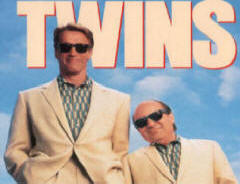
Same Difference...
We are all
different, we are all unique.
We all have different body shapes, physical sizes, cardiac capacities, lung capacities, body compositions, genders and metabolic rates.
We will all respond differently, sometimes vastly, to the same stimulus.
It is an undisputable fact that, people with the same resting and maximum heart rate will return a different heart rate when cycling at 240 watts, running at 12 kph or swimming at their optimal efficiency stroke.
In fact, the same person will probably return different heart rates on three separate days or occasions when riding at 240 watts, running at 12 kph or swimming at their optimal efficiency stroke.
Heart response is affected by (amongst, many others) gender, heart contraction speed, duration of contraction, blood pressure, hydration, fitness, freshness, tiredness, altitude, hematocrit, air temperature, wind direction (rider CDa (drag factor), body size), road incline (body mass), glycogen levels, core temperature, cardiac drift rates, and tens of other variables; need I go on?
All the above affect your heart rate, it's capacity, it's efficiency, it's effectiveness and it's ability to supply blood to your muscles.
You can see why heart rate training may, if your measurements or zone calculations are out, hold you back more than it can advance you. You need to know your min/max rate and use the correct zones to get the most benefit from your sessions.
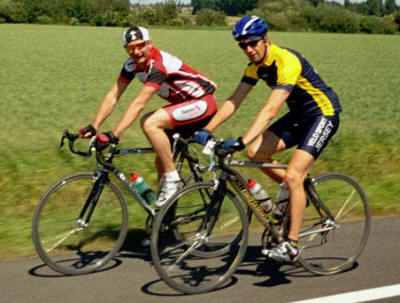
Recovering
between cobble sections ~ Paris Roubaix
Zone 2 with Dave Whitt
The Heart/Blood ~ Lungs/Oxygen
Relationship
At any given exercise intensity, your muscles require a given level of oxygen
to be constantly supplied to them. The more power you want the more oxygen
the muscles demand.
That demand is met by the heart and the lungs. We'll cover lungs next time. The lungs provide the oxygen, the heart the blood. Your body contains around five litres of oxygen rich blood and your heart, if you could squeeze it, would feel like compressing a tennis ball.
Stroke Volume (SV) is the amount of blood supplied with each heart beat. The stroke volume of the heart obviously increases over time as we age; an adult heart is bigger than that of a child. However, it doesn't grow for ever, and at some point will "mature".
But the heart, being a muscle will also, to a certain extent, respond to "training," just like your arm or leg muscles do. The heart is a "special" muscle (as it doesn't get tired or lactastic) it also works involuntary, without consciousness, but we won't go in to that today!
I know I just said we're all different, but the average stroke volume of an average man is around 70 ml/beat. Ladies, as with their lungs, generally have a 15-20% lower heart capacity than men.
Multiply your stroke volume by your heart rate and you have Cardiac Output (CO) which is measured in litres per minute, l/m.
▼ (SV ml x HR bpm) / 1000 = CO l/mSo, from the flamme rouge to the finish line, when the race is going flat out, you're pumping around 15 litres of blood per kilometre!▼ (70 ml x 180 bpm ) / 1000 = 12.6 l/m
During my infamous, 300 km Wanderlust Ride around Jersey, (in the aid of factsheet research) my heart pumped around 6850 litres of blood; 11 hours at an average of 148 bpm.
Followed, for the remaining 13 hours of the day, by the "normal" average resting blood transport capacity of 316 litres per hour. Which totals 4100 litres.
This gives a total 10,000 litres of blood pumped by something the size of a large orange, or in my case, a satsuma!

To give you perspective, this is a 10,000 litre water tank being delivered for a Fijian Island project.
Our hearts are remarkable things.
So you can see your body's demand for oxygen-rich blood, when exercising, is enormous. Our ability to manage this delivery system, improve it and make it more efficient and effective, has the capacity to bring massive rewards from our training investment.
And I'll cover how we can do this over the coming months.
But you need to have your starting premise based on facts and knowledge not hearsay and internet noise.
The Key Training Markers
The
main areas to concern you in improving your sporting prowess, no matter
what your discipline, are your Onset of Blood Lactate Accumulation (OBLA),
Functional Threshold Power (FTP) heart rate VO2max and your Maximal
Aerobic Power (MAP). As I said, I'll cover these in depth in other
factsheets over the coming months.
Once you know these physiological markers, you can do something about improving them by doing the right things, in the right order at the right time.
So take a formal test, or get on the road with a mate. Get accurate heart readings for resting and max, and work out your heart rate zones. If you're not sure how to, fire us an email, using the link on the left, and we'll do it for you.
Once you have your zones defined, you can then do something about maximising the returns on your training investment. You can find out what each zone does by reading these descriptors...
You can also check your heart Orthostatic Heart Rate to see if you've recovered form a race, previous training, or sickness. You might even find out why you're lethargic, or if you are coming down with sickness.
If your normal range is say around 10 to 12 bpm increase, then you want to be "on guard" if your reading suddenly jumps to anything between 18 to 20 bpm.
Use your knowledge of recent training/social events to make a judgement call on your preparedness to undertake a hard session, or is a recovery day in order?
Beware Charlatans...
Finally, this is why I get upset about some of the stuff on the
net! These screen dumps are from a very professional looking
website that purports to tell you about your heart rate/VO2max
correlation.
It won't allow me to find mine out as it tells me my heart rate can't be higher than 175! Well you can see from my heart rate test above that that's rubbish...
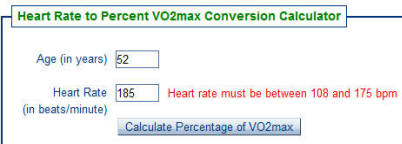
It then goes on to tell me that my VO2max is elicited from 102% of my max heart rate!!!
Hopefully I don't need to point out the absurdity of this nonsense. And to be honest, this wasn't the only one I found, there's loads of them!
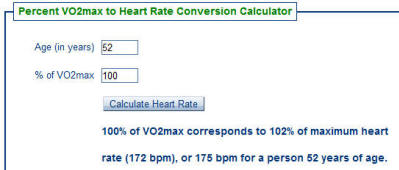
The Message There are allegedly, around 43 different ways of measuring heart rates and creating heart rate zones. If you're going to use heart rates as your training parameter of choice, find one that works for you.
Do not worry about staying in, or straying from, your heart zone when out on a road ride. You can't do three hours at level two without drifting in to level three, or one, every now and again.

You might even hop into level four for thirty seconds or so. It's not the end of the world. As long as the majority of your ride is done at the level you were targeting you will reap the majority of the adaptation you were after!
Listen to your body and you'll know if you're working in the right area. If you can ride and talk, you're aerobic. If you can't you're anaerobic. If you're sprinting your heart rate doesn't matter anyway.
Your max heart rate and the heart zones are important, but they should not drive your training in isolation.
Knowing your onset of blood lactate accumulation, and the heart rate this occurs at, is important. Knowing your FTP heart rate is important. Knowing your VO2max Development heart rate is important. I'm sure you get the picture.
Until next time...
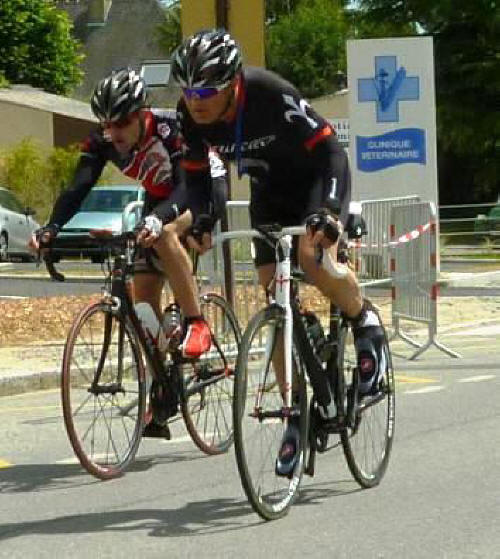
Chris Stephens & Andy Perree ~ @ max heart rate, as usual
could be any hill in Jersey but this is the finish of the Marc Gomez
Footnote
Our Programmes don't use prescribed heart rates
as an effort intensity, but use your heart rate zone to confirm you're
getting the right physiological return for your training investment.
If you can "just" get to the end of the final effort of any of our sessions or drills, then you've nailed the training stimulus you were after. No matter what your heart rate happens to be!
Controversial I know but it really, really works. I've said it before I'll say it again, Coppi, Merckx, Hinault and the other icons of our sport, never had heart monitors. It never seemed to hold them back.








